Seamed Wrap
We especially love that our beautiful Seamed Wrap takes care of itself: no loose ends, no knotting, no finagling. A self-sufficient design with effortless style built right in? Yes!
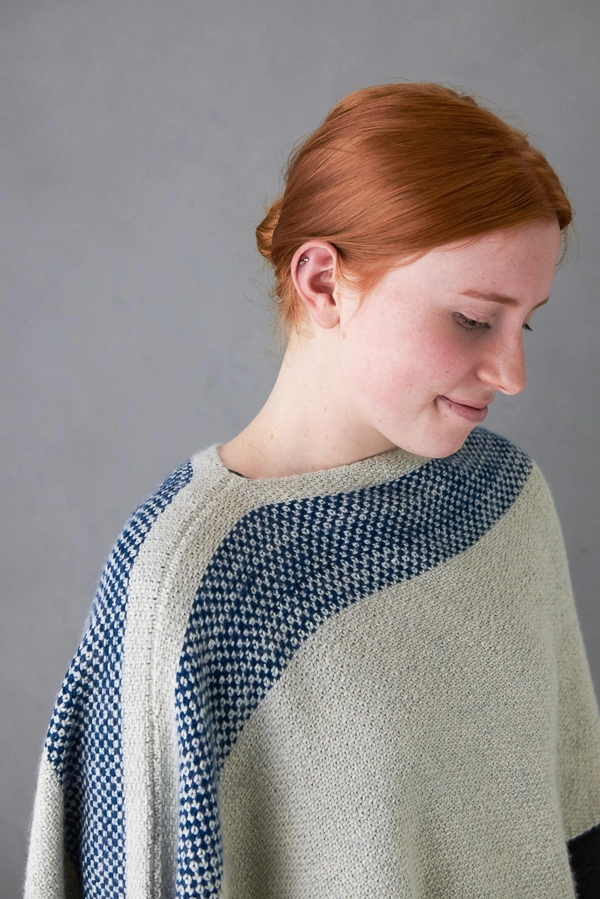
The clever construction couldn’t be simpler. You knit a long rectangle, fold it in half, then seam together a section of the cast-on and bind-off edges to create an opening for your head. From 2-D to 3-D just like that!
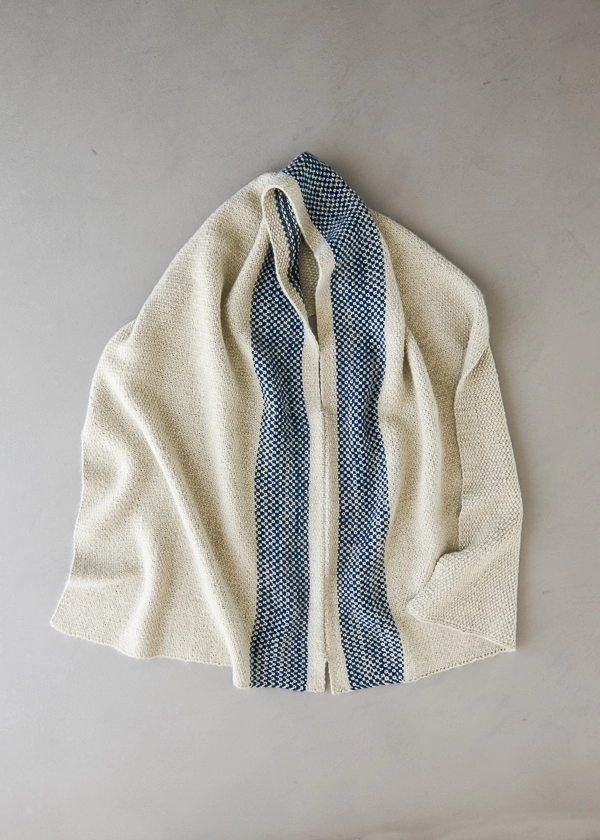
The elegant woven look comes from one of our all-time favorite stitch patterns, the linen stitch. A simple slip-stitch pattern that remarkably recreates a woven textile, no loom necessary!
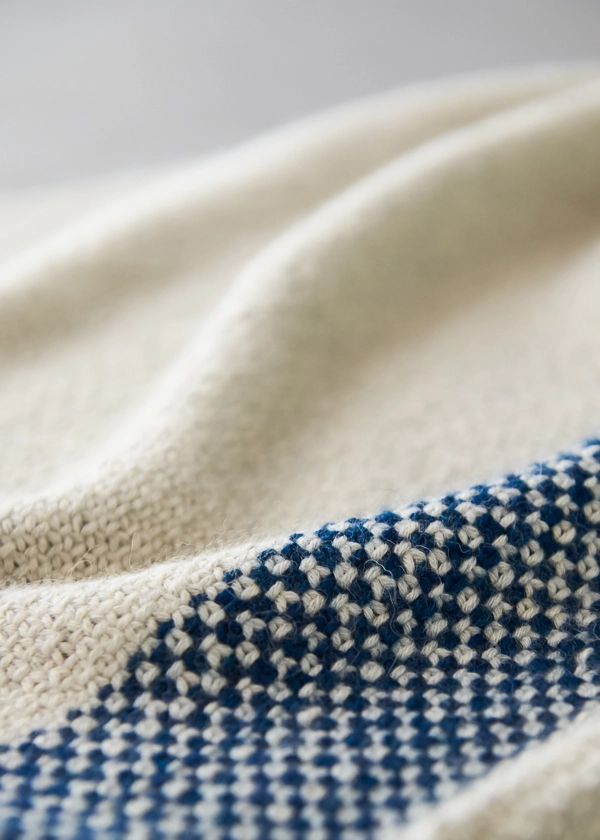
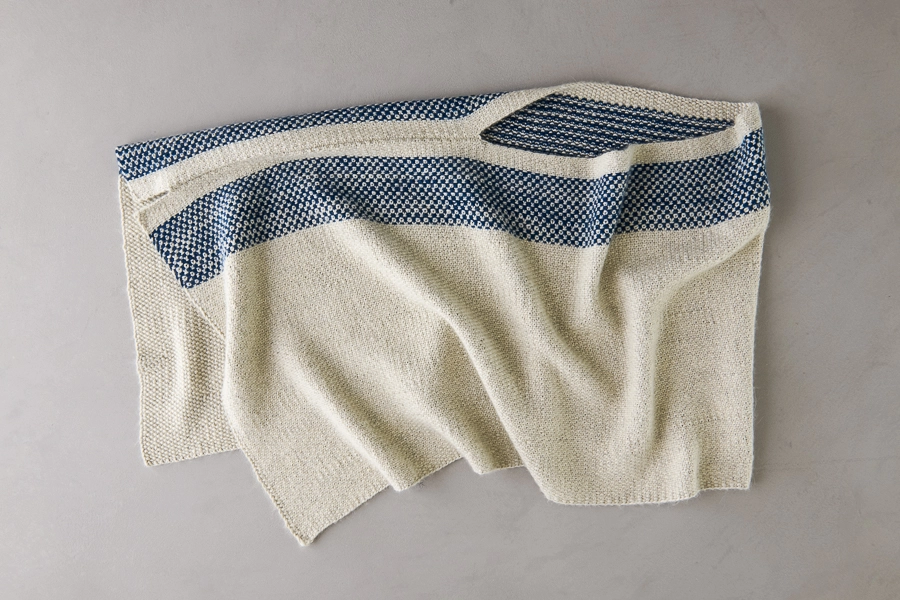
For a design that’s so thrown-on-and-go chic, we turned to Season Alpaca, our gorgeous 100% super baby alpaca with just the right drape. Pick your base color and then just the right contrast color for the band of two-color stitching that adds a make-it-yours moment.
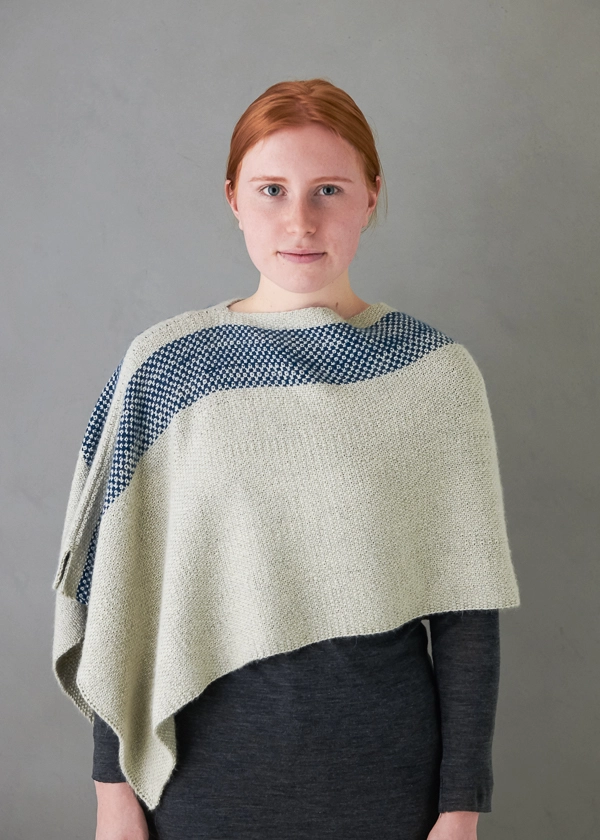
The real point here is to have some fun with this little garment. Wear the seam sideways, in front, or even in back; layer it over or under; add flair to an outfit or warmth to a woods walk… Free your spirit!
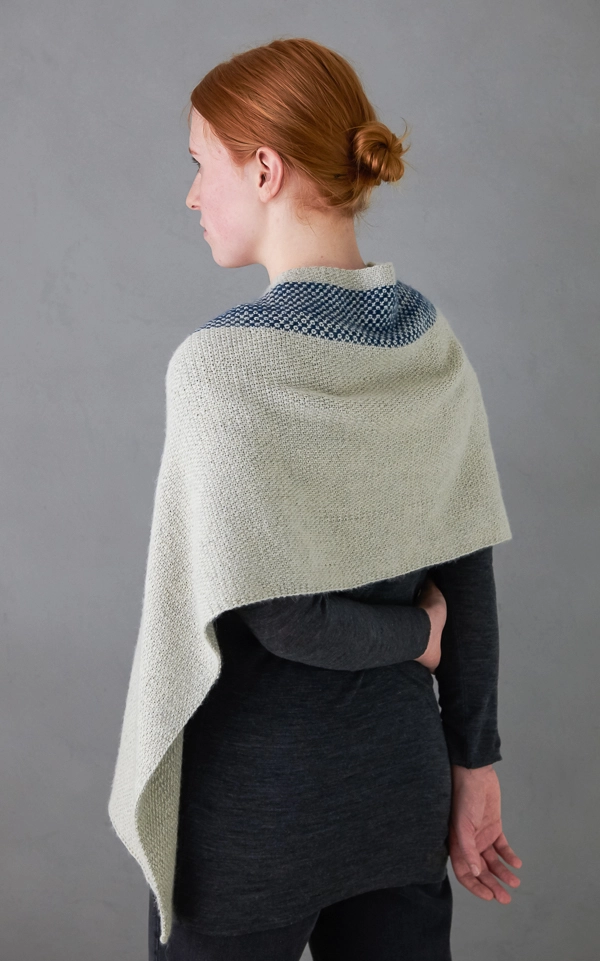
Designed by Purl Soho designer, Jake Canton. Click here to see even more of Jake’s designs!
Share your progress + connect with the community by tagging your pics with #PurlSoho, #PurlSohoBusyHands, #PurlSohoSeamedWrap, and #PurlSohoSeasonAlpaca. We can’t wait to see what you make!
Materials
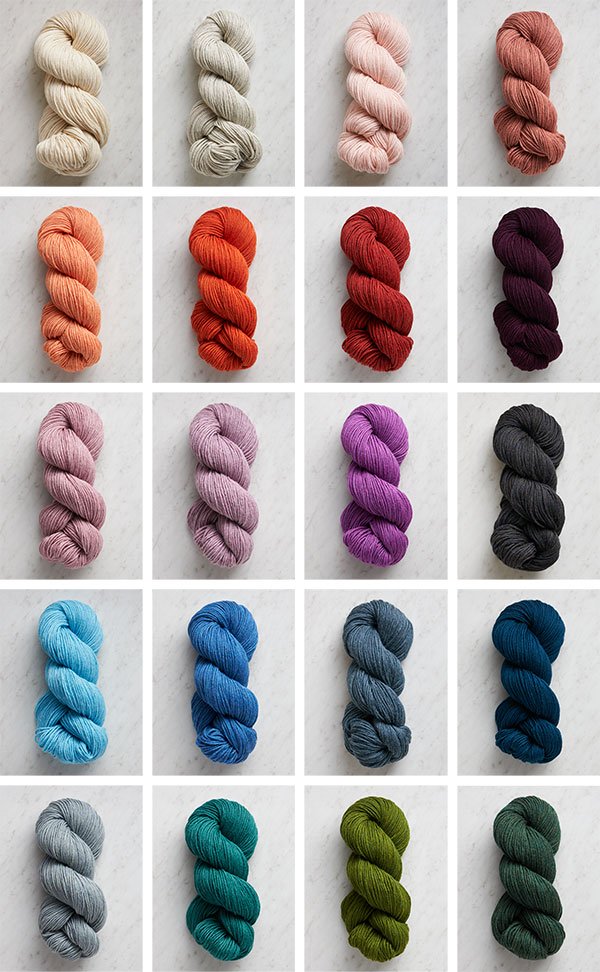
- Main Color: 3 (4, 6) skeins of Purl Soho’s Season Alpaca, 100% super baby alpaca. Each skein is 218 yards; approximately 655 (855, 1215) yards required. We used Dove Gray.
- Contrast Color: 1 (1, 1) skein of Season Alpaca. Approximately 75 (85, 130) yards required. We used High Tide.
- US 7 (4.5 mm), 40- or 47-inch circular needles
- Spare US 7 or smaller circular needles
Gauge
28 stitches and 40 rows = 4 inches in Linen Stitch
Size
To fit approximate chest circumference of 28–38 (40–50, 52–62) inches
Finished Dimensions: 44 (50, 58) inches wide by 15 (17, 21) inches long
For our sample we made the Adult Medium size.
Notes
Construction
You knit this piece in one flat panel, then fold it in half and seam it along the top edge, leaving an opening for the head.
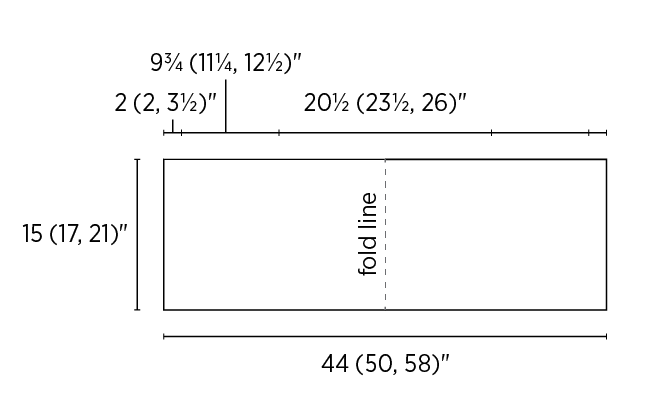
Stitch Multiple
This pattern works over an even number of stitches.
Pattern
Begin
With Main Color (MC), cast on 308 (350, 406) stitches, using a basic Long Tail Cast On.
Work in Linen Stitch as follows…
Row 1 (wrong side): Slip 1 knitwise with yarn in front (wyif), *p1, slip 1 purlwise with yarn in back (wyib), repeat from * to last stitch, k1.
Row 2 (right side): Slip 1 knitwise wyif, *k1, slip 1 purlwise wyif, repeat from * to last stitch, k1.
Repeat Rows 1 and 2 until piece measures 11 (13, 15½) inches from cast-on edge, ending with Row 2.
Work Two-Color Stripe
In this section, work Linen Stitch with two colors…
Join Contrast Color (CC).
**With CC, repeat Rows 1 and 2 of Linen Stitch one time.
With MC, repeat Rows 1 and 2 of Linen Stitch one time.
Repeat from ** for 3 (3, 4) inches, ending with Row 2 of CC.
Cut CC.
Continue In One-Color Linen Stitch
With MC only, repeat Rows 1 and 2 of Linen Stitch for 1 (1, 1½) inch(es), ending with Row 1.
Bind Off + Seam
NOTE: For this section, here is how to bind off “in pattern”: With right side facing you, k2, pass first stitch over, slip 1 purlwise wyif, pass stitch over, *k1, pass stitch over, slip 1 purlwise wyif, pass stitch over, repeat from * until directed number of stitches have been bound off.
Step 1
Bind off 14 (14, 24) stitches in pattern (see Note above) transfer last stitch from bind-off to spare needles and continuing with spare needles, *k1, slip 1 purlwise wyif, repeat from * until there are 68 (78, 88) stitches on spare needles (including last stitch from bind-off). Leave these stitches on spare needles. [68, 78, 88, total stitches on spare needles]
Using main needles, bind off 144 (166, 182) stitches in pattern.
Step 2
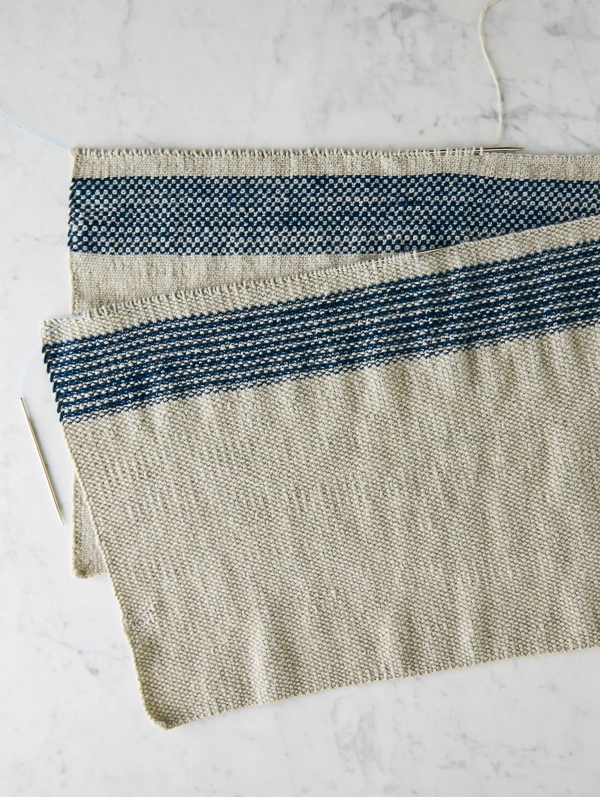
Fold piece in half by aligning selvages, right sides facing each other and stitches on both needles parallel to each other.
Step 3
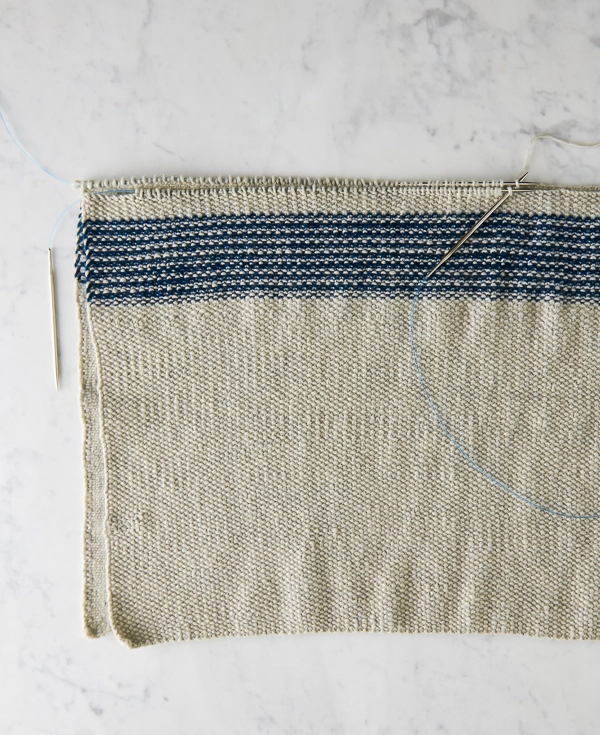
Work a 3-Needle Bind-Off beginning with the first stitch on the main needles and the last stitch worked on the spare needles, joining together these two sections of the bind off row [68 (78, 88) stitches each] until you have bound off all the stitches on the spare needles. [14 (14, 24) stitches remain]
Step 4
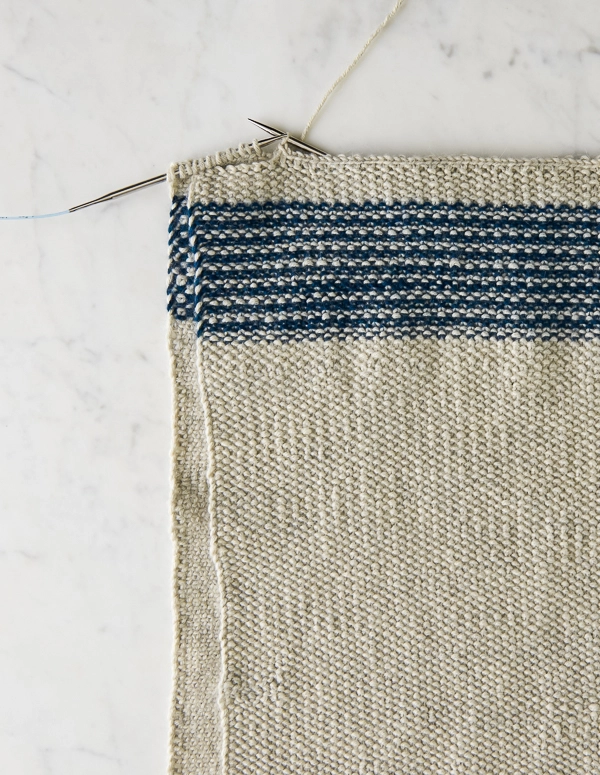
With right side facing you, bind off remaining 14 (14, 24) stitches in pattern.
Turn piece inside out.
Weave in the ends and wet block.
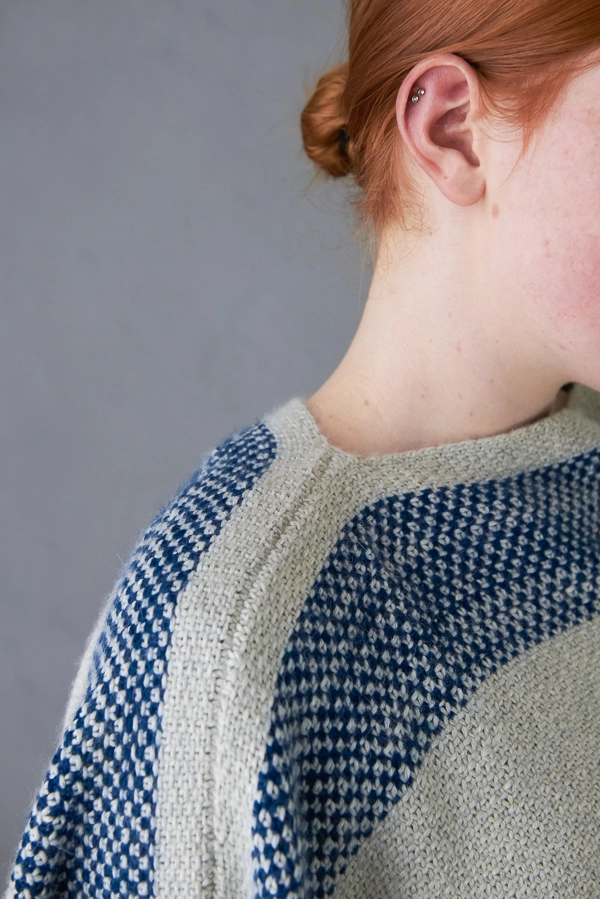
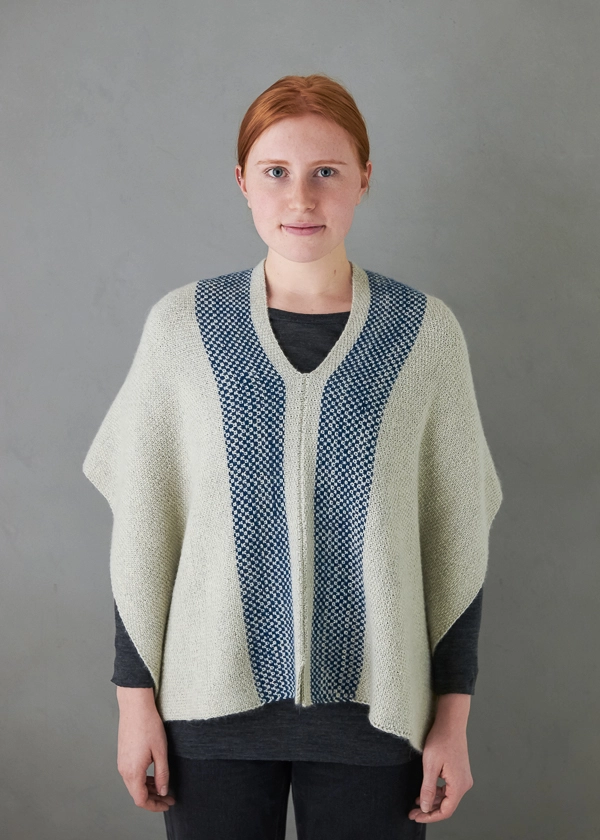

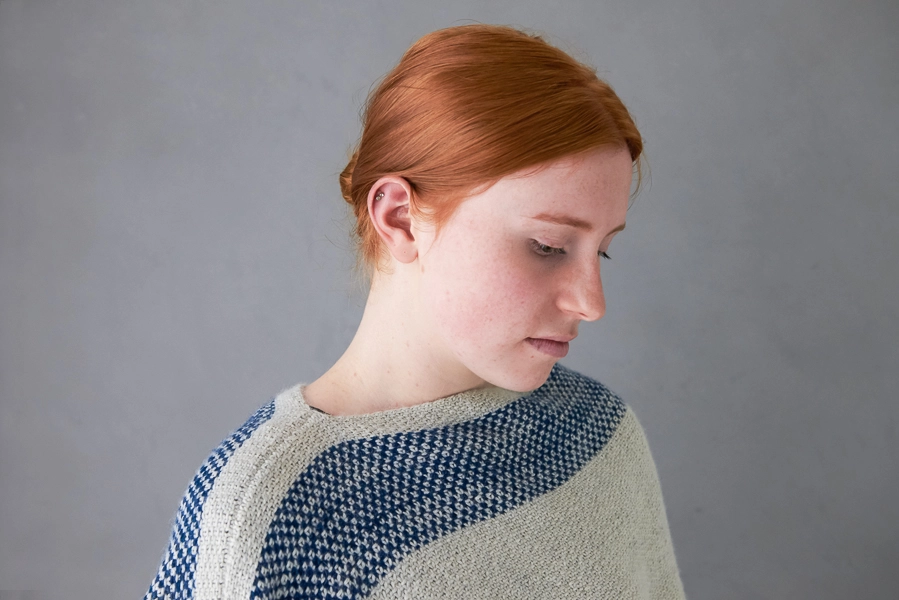
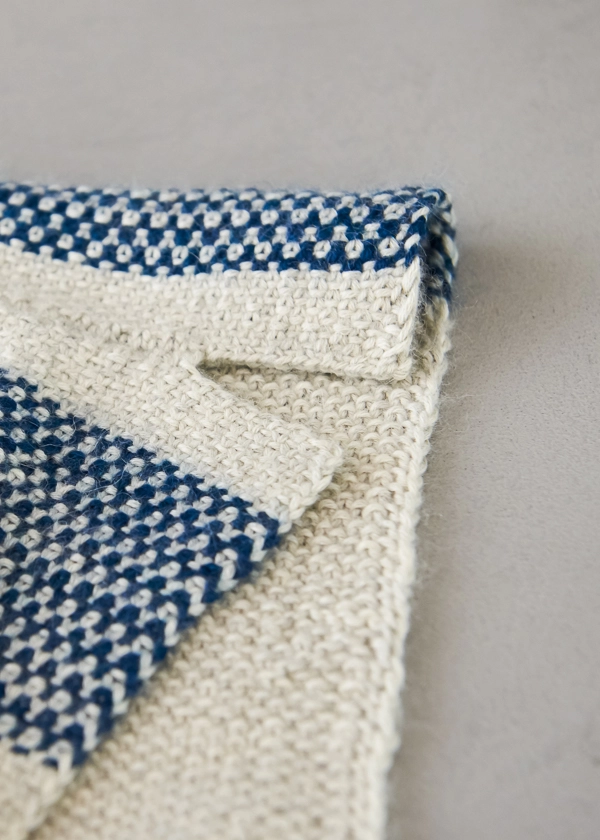
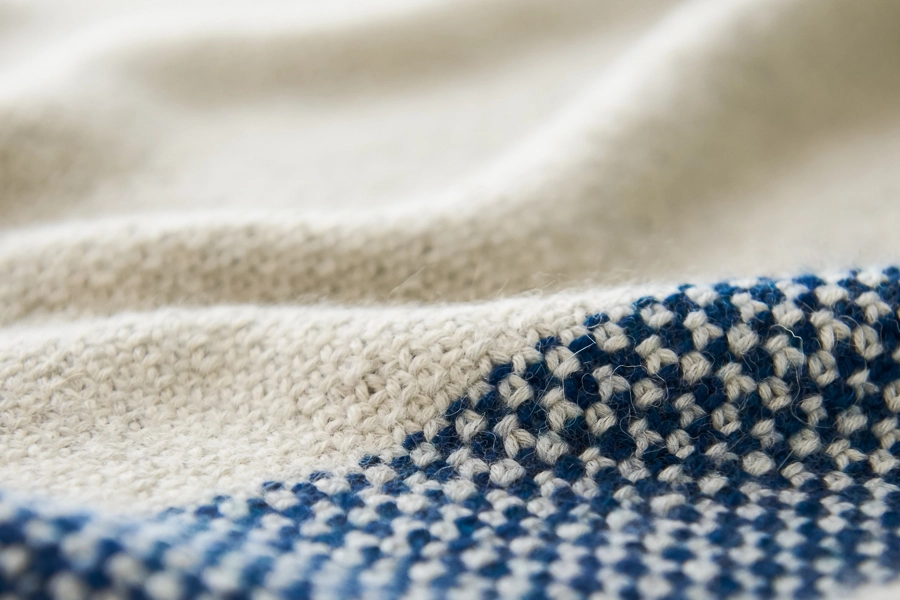
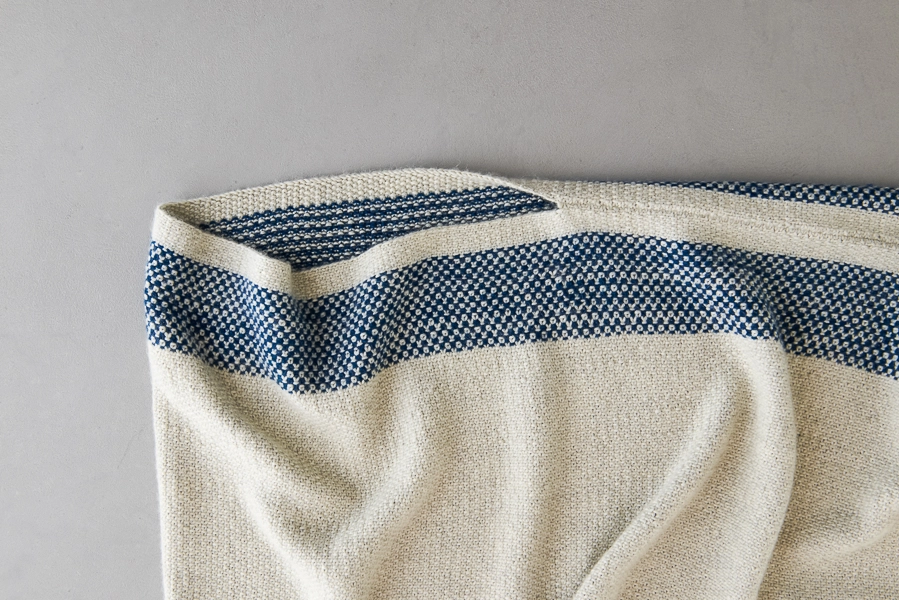



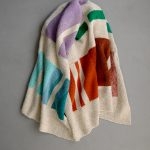
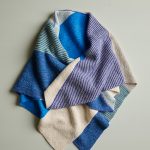
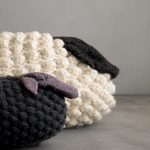
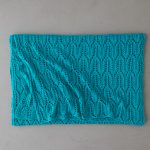

this is so pretty…as a non knitter(I know) who still loves to look at the patterns. I am seeing a pattern that I could sew! Maybe a little double gauze summer shawl
Gorgeous
I would use the Kitchener stitch for a seamless finish.
Hi Donna,
Great idea! You could certainly use kitchener stitch here though I do think that it would still be visible. I just did a search for kitchener stitch in linen stitch and was not able to find a way to do so that would be invisible as kitchener stitch would be with stockinette stitch. YOu could certainly give it a try! What an interesting technique that could be!
Best,
Cassy
Ik werd direct verliefd op dit patroon en het garen. Ik ga dit beslist breien.
I immediately fell in love with this pattern and the yarn. I’m definitely going to knit this. Greetings from the Netherlands
Hi,
I would like to make this pattern with Worsted Twist.
Would that be possible?
Thanks,?
Hi and thanks for writing in! Yes, it should be quite easy to adapt this pattern for Worsted Twist! I would start by knitting a gauge swatch in the Linen Stitch pattern using a US 9 or 10 needle. You can then multiply your stitches per inch by 44 (50, 58) inches and round to the nearest even number to determine how many stitches to cast on. When knitting the rectangle, you can then follow the length measurements for your size as written in the pattern. To figure out how many stitches to leave for the neck opening, you can use the measurements on the diagram and your stitches per inch to determine how many stitches should be worked in the three needle bind off
I hope that helps, and please do let us know how it turns out!
Julianna
Hello,
Would I be able to substitute mulberry merino? If yes, what neutral color would you suggest to go with a dark red as the pop of color?
Cordially,
Kat
Hi Kat,
Thanks for writing in, and what a wonderful suggestion! Yes, Mulberry Merino would be a perfect yarn to substitute for this pattern! I think Red Plum would be lovely paired with either Cinder Gray or Reed Gray.
Happy knitting!
Julianna
Thank you Julianna. Do you have a suggestion for a machine wash yarn as well? Thank you.
Hi Katrina,
Cotton Pure would be an excellent washable option, and would result in a lovely spring and summer wrap. You could also use Posy, but since it is slightly lighter weight than Season Alpaca, I would definitely recommend knitting a gauge swatch before you get started.
Best,
Julianna
I like the idea of Mulberry Merino because I’d like to use a lighter gray color as a main color. Other than red, what would be a great contrast color? I wondered about Heirloom white but it might not show off the detail as much as a darker color. Not sure. What would you recommend? Also, does this yarn pill baldly – and would this yarn be compatible with the pattern?
Thanks! I’m ready to order!
Brenda
Hi Brenda,
Thanks for writing in! I think Cinder Gray would also look beautiful with Mustard Seed, Green Spruce, or Inlet Blue – there are so many options when you choose a neutral gray for the main color! Mulberry Merino would be the perfect weight for this pattern. Because this wrap isn’t likely to see a lot of hard wear or friction like a sweater would, I don’t think you will see too much pilling, but like all animal fibers, Mulberry Merino can fuzz and pill at first. We recommend using a tool like the Gleener Ultimate Fuzz Remover to remove pills and excess fuzz, and usually after a few sessions with the Gleener, pilling will decrease dramatically.
Happy knitting!
Julianna
love this!!! and could you please tell me how to make it in cotton pure ?thank you!
Hi Julie,
Thanks for reaching out! Cotton Pure is the same weight as Season Alpaca, so you should be able to knit this wrap without making any modifications to the pattern! I would still recommend knitting a gauge swatch, but I don’t think you will have any difficulty obtaining the correct gauge. You will need 3 (4, 5) skeins of your main color and 1 of your contrast color.
Happy knitting!
Julianna
Thanks, love the pattern. A printable version (that’s not 18 pages)would be great. I tried cutting and pasting, but can’t make that work.
Hi Fran,
Thank you so much for reaching out! You can use our print function to choose which images and sections of the pattern you would like to print – or not! If you’re on a desktop version of the site, you will find a “print” icon in the right column just below the date and tags. If you’re on a mobile version of the site, you will find a “print” icon below the pattern and above the comments.
Follow the easy on-screen instructions to delete whichever parts of the pattern you don’t want to print or save. For example, you may decide to shorten the pattern by omitting certain images or the list of materials. To remove images, click the drop down next to the image icon and change from 100% to 0%.
I hope that helps!
Julianna
Los felicito me encantan sus publicaciones, les pediría siempre que puedan den la opción de traducir sus publicaciones al español.
Saludos desde Santiago de Chile para cada uno de Uds.
Hi Margarita,
Thank you for this lovely comment. We do not currently have the resources to translate our patterns, but hopefully at some point in the future this will be more of a possibility. In the mean time I will certainly pass along your suggestion!
Best,
Julianna
I have tried to download pdf file of the pattern and it could not complete the transaction. After I choose to download the pdf, a question to confirm if I wish to download pops up. When I choose yes, nothing happens after that. Would appreciate your help.
Hi and thanks for reaching out! Unfortunately we have been getting some reports of this issue lately, and I am so sorry you are having trouble downloading the pattern! Please reach out to us at customerservice@purlsoho.com so we can try to troubleshoot this for you and can send you a PDF if necessary!
Best,
Julianna
What about WheatFlour and Red Plum in Mulberry Merino?
Still wondering about Cinder Gray and Mustard Seed. Any comments or preferences in which provides the best contrast? I know it boils down to the individual but given the actual colors in front of you, how is the coolest pairing?
Idea?
Thanks,
Brenda
Hi Brenda,
Wheat Flour and Red Plum would be another stunning combination! In terms of pure black and white values, Wheat Flour and Red Plum would have much stronger contrast than Cinder Gray and Mustard Seed, but gray and yellow together still has a really lovely pop and excitement. I think either option would be amazing!
I hope that helps, and please do let us know how it turns out!
Julianna
I am not able to get the free pattern in a PDF file to print. I really like this wrap and would like to knit it.
Hi Joyce,
Thanks for reaching ou! If you’re on a desktop version of the site, you will find a “print” icon in the right column just below the date and tags. If you’re on a mobile version of the site, you will find a “print” icon below the pattern and above the comments.
Follow the easy on-screen instructions to delete whichever parts of the pattern you don’t want to print or save. For example, you may decide to shorten the pattern by omitting certain images or the list of materials. To remove images, click the drop down next to the image icon and change from 100% to 0%.
I hope that helps, and happy knitting!
Julianna
I’m ordering yarn today for this “Seamed Wrap”. I’m excited to begin. I’m a pretty good knitter but I’m a little concerned about the directions at the end when it’s time to do the seaming. Is it super doable? I guess I’ll be learning a new skill when this is over!!? Thanks for the great pattern and step by step directions!?
Hi and thanks for reaching out! By the time you get to it, you will be so accustomed to knitting Linen Stitch that the cast-off in pattern will be a breeze, and we have a handy video for the Three Needle Bind Off that should be helpful! If you run into any questions, we’ll always be here to help!
Best,
Julianna
I’m struggling with the yarn in front for the first slip knit wise, it gets all twisty the next time I come to knit? What am I doing wrong?
Hi Lindsey,
Thanks for reaching out! Is the issue happening on both sides of the work? It is normal for the stitch to be a little tight on the next row, but it shouldn’t be difficult to knit. If you are finding that there is an extra strand of yarn, the problem is probably happening Row 2. After slipping the first stitch knitwise with the yarn in front, you have to move your yarn between the needles to the back of the work to get it in the correct place to knit the next stitch.
I hope that clears things up!
Julianna
Thank you! That helps a lot!
love the lilac quartz. any suggest for a contrast color? thanks!
Hi Camille,
Thanks for writing in! I think Lilac Quartz would look lovely with Peony Pink, Ebbtide Blue, or Winter Sage!
Best,
Julianna
Hello Purl Soho,
Tonight I began this pattern – making the small size based on chest measurements – 33. I cast on 308 and have knitted an inch. I’m really worried that I should have made the medium size although the measurements are way off – I worry about the drape. Will 44 inches still match the picture?
Suggestions?
Thanks,
Brenda
Hi Brenda,
Thanks for reaching out! Since your chest measurement lands right in the middle of recommended measurements for the smallest size, I think it is the correct size to knit for you! since the circumference of the wrap laid flat at the bottom edge is 88 inches for this size, there should be plenty of drape and length, and fortunately, the fit of this wrap is very forgiving!
Best,
Julianna
Hi
I noticed you said your sample is a medium. Does that mean the model is wearing a medium?
Thanks
Sarah
Hi Sarah!
Yes, our model is wearing the medium size sample. Happy Knitting!
Cassandra
I really like this project. I was wondering is the second set of needles a place holder?
Just trying to avoid buying two of rather same needle.
Also if a knit a medium will the 40 in needles or 47 be better?
Thank you!
Hi Sarah,
Great question! The second needle is used for the 3-Needle Bind Off. While it is ideal to use two needles that are the same size for this technique, you could use a US 6 needle to hold half the stitches, as long as you make sure you have a US 7 in your right hand to work the bind off. You really could use either size needle, but I would probably order a 40″ needle if you have to choose!
I hope that helps!
Julianna
Hello, beautiful pattern – I am wondering if I can use Jade Sapphire 2-ply cashmere instead of the season alpaca. If yes, please tell me how many skeins I should purchase, what size needles to use, number of cast on stitches, and any other modifications you think necessary. Thank you for your help.
Hi Brigitte,
Thanks for writing in, and what a lovely idea! Jade Sapphire 2-Ply Cashmere is a lace weight yarn, but with a few alterations to the gauge, it should work up wonderfully for this wrap. I would recommend knitting a gauge swatch in pattern using a US 3 or 4 needle. You can then multiply your stitches per inch by 44 (50, 58) inches and round to the nearest even number to determine how many stitches to cast on. When knitting the rectangle, the length measurements for each size are given in the pattern. To figure out how many stitches to leave for the neck opening, you can use the measurements on the diagram and your stitches per inch to determine how many stitches should be worked in the three needle bind off. It’s a bit tricky to estimate how much yarn is needed when modifying the gauge like this, but you should have enough with 3 (3, 4) skeins of your main color, and 1 skein of your contrast color.
Happy knitting!
Julianna
Hi, thank you so much for your reply. I can’t wait to get started 🙂
Very excited to start this project! Are there any instructions for how to join the contrast colour? Would I just carry the main colour up the side? Thank you!
Hi Kristen,
Thanks for the question! When you start to knit with the contrast color, just be sure to leave a long enough tail, about 8″, to weave in later, and carry the main color up along the side when it’s not in use. I like to tuck my carried yarn so it gets caught by the working yarn at the beginning of each row. Please let us know if you have any more questions!
Happy Knitting!
Cassandra
I’ve been trying to get the linen stitch pattern correct but it’s not working for me and I think it’s has something to do with knitting with round needles. I know I’m not knitting in the round but for some reason I don’t think my pattern is turning our correctly. Most other sites show linen stitch worked with only K stitches, whereas yrs shows a P stitch in first row. Please help as pulling out 350 sts each time is getting frustrating. I have been knitting for many years but perhaps my old age is catching up.
Barbara
Hi Barbara,
Thank you for writing in! When worked flat, Linen Stitch will always have knit stitches on the right side and purl stitches on the wrong side. Row 1 of this pattern is the wrong side, so having purl stitches is exactly right! I recommend working a small swatch (20 stitches or so) of the pattern first before diving into the full project- this will save you a lot of time and effort and allow you to get used to the stitch pattern without the pressure of the full cast on. I hope this helps!
Happy knitting!
Gaby
It is difficult to pick colors online! I’d like to use the Mountain Heather as my main color but need help picking a good contrasting color. Could you help?
Hi Pamela!
Yes, it can be tricky to pick colors from a screen – I hope I can help! I think that the Mountain Rose would look lovely with Red Plum as the contrast color. Season Alpaca is so wonderful to knit with, you’ll have a lovely time working with whatever colors you choose!
Happy Knitting!
Cassandra
Do the dimensions and thick/thinness of the finished product allow for putting it around the neck (not putting head through opening) and inserting end of wrap into the opening, with ends of wrap resting on chest thru opening?
Thank you
Hi Helene,
That’s a great question! We haven’t had anyone try this yet. The amount of knitting fabric might be a bit bulky resting on your chest, but it would be super warm! If you were going to try this I would recommend casting on for the largest size, and then following the directions for the smallest size. I hope this helps, and please do let us know if you try it!
Happy Knitting
Jessica
I’m wondering how the wrap looks with a Medium/dark main color and a lighter accent. Do you loose the texture of the linen stitch with a darker base, say Ebbtide Blue? Thanks!
Hi Sarah,
Thanks for writing in! As long as you choose colors that have a high level of contrast, the linen stitch accent should still stand out beautifully! I would recommend choosing a very light color to go along with Ebbtide Blue, such as Heirloom White. Choosing a more mid-toned color, like Dove Gray or Winter Sage, would still be lovely and quite noticeable, but the contrast wouldn’t be as stark, so you might not see the individual stitches as clearly from far away.
I hope that helps!
Julianna
Hi there, linen stitch has got the better of me so I have decided to crochet using the equivalent in linen stitch. I’m assuming that I chain enough to measure the width that I need for the large size? Any advice would be great as the pattern is lovely. Thank you
Hi Maria,
Thanks for writing in, and I’m sorry to hear that you struggled with the linen stitch! Working a chain the length of the panel will probably turn out the correct size, but to make sure, I would recommend crocheting a gauge swatch to measure your stitches per inch in the crocheted linen stitch. You can then multiply your stitches by the length of the panel to determine how many to chain, just in case your starting chain is a bit looser or tighter than your regular stitches! On average, crochet takes about a third more yarn than knitting, so you might also want to order some extra yarn in the same dye lot in case you run short.
I hope that helps, and please do let us know how it turns out!
Julianna
I am knitting a rectangular top that calls for a sport weight yarn (Euroflax Linen by Louet), Size 8 US needle. 800-900 yards needed. I like your yarns and would rather buy from you. What yarn do you recommend?
Hi Linda,
Thanks for reaching out! I would recommend using four skeins of our Field Linen! It is quite similar to Euroflax and should be a lovely substitute. You could also try three skeins of Burnish or six skeins of Spectrum Silk, both of which are sport weight and perfect for drapey summer tops.
I hope that helps!
Julianna
Hi. Is this what you are saying?
R1: yif slip 1 knitwise, p1, yib, slip 1 repeat from P1 to last stitch k1
R2: yif slip 1 knitwise, k1, yif, slip 1 purlwise, repeat from K1 to last stitch k1
This wording works better for my brain. Am I right? I am also having the bunching problem. My 2nd row doesn’t lay flat.
Got any ideas? Thank you! I am excited to make the wrap and am just practicing with the stitch now. We must use an even # of stitches, right?
Hi Odette,
Thanks for writing in! Yes, that is correct! I am not sure what would be causing the bunching and causing the 2nd row to not lay flat, are you using long enough circular needles? If that doesn’t help please email us a photo to customerservice@purlsoho.com and we can help you trouble shoot further from there. Also, yes the pattern works over an even number of stitches!
Please feel free to reach out with any more questions, happy knitting!
Gianna
Hi.
I got some good advice from JaJa this afternoon. I had bound off the entire piece before I rechecked the final instructions!*
Anyway, she suggested that I use the mattress stitch and just seam up the piece rather than try to undo the bind off. My question now is since it seems to be pretty short – folded in half, it measures 21 in. Before I stitch it together, should I block it and perhaps stretch it a little.
Please advise. Maybe 21 in. is all right.
Brenda
Hi Brenda,
Thanks for reaching out! Blocking the piece first will help stretch the stitches a bit and also gives you the chance to evenly distribute the stitches so that when you seam it up it will very easy!
All the best,
Gianna
Hello! I have a nit-picky question (pun!). I have finished the wrap and am now binding off. The instructions start with “Bind off 14 stitches in pattern” – does this mean that I4 stitches should be completely bound off, meaning I work to the 15th stitch (which the 14th stitch goes over) and then that 15th stitch is what is moved onto the spare needle? Thank you!
Hi Lesley,
Thanks for reaching out! Yes that is correct, 14 stitches should be bound off, so the 14th stitch goes over the 15th stitch and then that 15th stitch is what is moved onto the spare needle!
I hope this helps, happy knitting!
Gianna
Hi, I am a regular as long time purl soho knitter and love your yarns and patterns… However… super unhappy with this pattern/ project . I made the largest size (wear a size 8) and knitted exactly to specs, it does a weird bunch on the un-seamed shoulder and sticks up to my ear. When I lay the seam down the front it bunches up to my ponytail in the back and is higher than my shoulder blades on my back. It looks nothing like the picture when on, and exactly like the pictures when off the body. Love the linen stitch and thinking about ways to use it in other works. After $150 of yarn, I was hoping for something I would be happy to wear.
Hi Jaclyn,
I am sorry to hear that you were not pleased with this project! If you would like, please send us a photo to our email customerservice@purlsoho.com and we can troubleshoot what may be causing the bunching from there.
Warmly,
Gianna
Hi Gianna, hi Jaclyn,
I just finished the wrap and have the same problem, did you find a solution? I’d appreciate any help you can offer, took me ages to knit the whole thing and I really don’t want to start all over again.
Thank you,
Sandra
Hi Sandra,
Thanks for reaching out! It doesn’t appear that we received photos of the issue so at this time I don’t have a solution to the problem! If you can, please send this information along with some photos to our customer service team at customerservice@purlsoho.com and they can troubleshoot from there and hopefully find a solution!
Warmly,
Gianna
Love the pattern;however, I would like a longer wrap. Please advise as to how to alter the pattern. Thanks.
Hi Kathleen,
Thanks for reaching out! Since this wrap is knit horizontally, to adjust the length you will simply cast on more stitches! Just be sure to keep in mind that the pattern works over an even number of stitches!
I hope this helps and please let me know if you have any more questions!
Warmly,
Gianna
Hi,
I really like this pattern and would like to try it with heavier yarn for a winter wear. I’m thinking of knitting this for my mom for Christmas. Can you suggest which yarn I can use?
Thank you!
Hi Yoko,
Thanks for reaching out! You can certainly use a heavier-weight yarn, but you will need to make a few adjustments to the pattern to accommodate! I recommend using our lovely Plenty or Worsted Twist, from there you can start off by working a gauge swatch with an appropriately sized needle (we recommend a US 8 – 9 for Plenty and a US 7 – 8 for Worsted Twist.) From there you can calculate your stitches per inch and determine the new cast on for the pattern! I suggest checking out our wonderful tutorial All About Gauge, it is an excellent resource to use!
I hope this helps, happy knitting!
Gianna
I have spent so long on this project and I absolutely love it, but I started to bind off and want to make sure I am doing this right. I am making the smallest size.
You bind off 14 stitches in pattern, the 15th stitch, which was slipped purlwise wyif, is transferred to a spare set of needles, then you again slip 1 purlwise wyif (so 2 slipped stitches in a row)? Then continue k1, slip 1 purlwise wyif until there are 67 stitches on the spare needles the 67th of which would have been slipped purlwise wyif and then again slip 1 purlwise wyif (2 slipped stitches in a row)? Giving you a total of 68 stitches on the spare needles. Is the correct? I would hate to have gotten this far and mess it up! Haha
Thank you so much!!
After going over this again I realized that the 67th stitch would actually be knit and the 68th slipped purlwise wyif. So there would not be 2 slipped in a row there, but there would be for the 15th and 16th stitch?
But now I am also concerned that after I get 68 stitches onto the spare needles and then continue binding off with the main needles do I start again with another slipped stitch, (so the 68th and 69th stitch would be slipped purlwise wyif) to put me back in pattern?
Am I crazy? Hopefully you are less confused after reading this than I am after writing it!
I’m so sorry, I wish I could edit my comments!! Haha
Regarding the last part of my second comment I realize that it would be the 68th stitch on the spare needles, the 82nd stitch total (14 bound off + 68 on spare needles) and the 83rd stitch (or the 1st stitch back on the main needles) that would both be slipped purlwise wyif?
Shall I try this again? Haha
So the 15th and 16th stitch and the 82nd and 83rd!?
😳
Hi Alix,
Thanks for reaching out! For the bind off, you will Bind off 14 stitches in pattern and then transfer the last stitch from bind-off (the 14th stitch) to spare needles and then you will continue working with the spare needles, *slip 1 purlwise wyif, k1, repeat from * until there are 67 stitches on spare needles (including the last stitch from bind-off). So total you should have 67 stitches on the spare needles, this includes the 14th stitch from the bind off!
I hope this clears things up, but please let me know if you have any more questions!
Gianna
Hi Gianna,
Thanks for your response, but the math doesn’t add up. I cast on 308 stitches. 13 (fully bound off) + 67 (on spare needles) + 144 (bind off) + 67 (for 3-needle bind-off) + 13 (bind-off) = 304.
According to your response to Lesley’s question you bind off 14 stitches and move the 15th stitch to the spare needles. Then the notes say “transfer last stitch from bind-off to spare needles and continuing with spare needles, *slip 1 purlwise wyif, k1, repeat from * until there are 67 stitches on spare needles (including last stitch from bind-off), slip 1 wyif. 68 total stitches on spare needles.” So I am back to where I started with my previous question. Do I just want to make sure to stay in pattern throughout the whole bind-off process or are there 2 places where you have 2 slipped stitches in a row to set it up for the 3-needle bind-off?
Thanks again for your help!!
Hi Alix,
Thanks for checking in about this again! I wanted to let you know that we’re taking a closer look into the issue, but it will take some time to figure out what’s going on. We’ll make sure to reach out to you as soon as we have a concrete answer so that you can finish up your wrap!
All the best,
Lili
Hi again Alix,
We took another look at the pattern and realized there was a mistake in Step 1 of the bind off! As you mentioned in your earlier comments, it doesn’t make sense to have two slipped stitches in a row, so Step 1 should actually read like this:
Bind off 14 (14, 24) stitches in pattern (see Note above) transfer last stitch from bind-off to spare needles and continuing with spare needles, *k1, slip 1 purlwise wyif, repeat from * until there are 68 (78, 88) stitches on spare needles (including last stitch from bind-off). Leave these stitches on spare needles. [68, 78, 88, total stitches on spare needles]
Using main needles, bind off 144 (166, 182) stitches in pattern.
This way, the math should add up (14 + 68 + 144 + 68 + 14 = 308), and the bind-off in pattern will actually remain in pattern the whole way! Also, to clarify your question about moving either the 14th or 15th stitch onto spare needles, I can confirm that it is the 15th. I hope this clears things up, but please let me know if anything else is confusing. Thank you for bringing this to our attention and for your patience while we figured it out!
All the best,
Lili
Amazing!! Thank you so much!!
What # needle should I use with fingerling yarn?
Hi Sally,
Thanks for reaching out! That is a great question and depends on the yarn you are planning on using. Fingering weights can vary, so it helps to see what needle size is recommended for the specific yarn. For example one of our fingering weight yarns, Linen Quill, we recommend a needle size US 2 – 5, so there is a bit of variation!
Then looking at a pattern like this, that uses a linen stitch, you will want to go up in needle size. So if I were to use Linen Quill for this pattern, I wouls go for the US 5 needle!
I hope this helps, and please let me know if you have any more questions!
Gianna
Hi there.
I can’t find the specified wool for the wrap. Will the Rowan Creative Linen work – will it have the same effect/drape?
Regards.
Hi Soraya,
Thanks for reaching out! For this wrap, we used Season Alpaca (you can find this information under the MATERIALS section of the pattern!) For your convenience, I have linked it here as well: Season Alpaca
Warmly,
Gianna
Hi Gianna. Thanks for your response. Unfortunately the yarn you have recommended is not available- I live in South Africa. Going to have to substitute with another type of wool. Any suggestion?
Regards.
Hi Soraya,
Thanks for your response! The yarn we used for this pattern is a 100% super baby alpaca, sport weight yarn (or 5ply yarn), and depending on the size you are planning on using you will want approximately 655 (855, 1215) yards, you can substitute any yarn you would like within the same yarn weight (sport weight/5 ply). However, if you are interested in this yarn we do ship internationally! For more information, you can check out our Shipping page!
I hope this helps!
Gianna
Help. I just finished the wrap but read the directions incorrectly. Under step 1 of bind off and seam – when it said using main needles, bind off 166 stitches in pattern – I assumed that was all the remaining stitches so that is what I did. I am trying to undo the bound off stitches – how many stitches should I leave on the needle and not bind off so Incan back into it?? Thanks for your help. I really think a note on the pattern at that juncture – reminding the knitter how many stitches will remain on main needles after bind off would be helpful!
Hi Tracie,
Thanks for writing in. You’ll need to undo 92 stitches to get back to the point you should be to continue to Step 2 of the bind-off! So you should have 14 bound-off stitches at the beginning of the row, 78 live stitches on spare needles, 166 bound-off stitches, and 92 stitches on your main needles. Hope this helps!
All the best,
Lili
The linen stitch is lovely but unless I pay strict attention for all 350 stitches all the time, I get out of rhythm and find I actually purl the stitch when I’m supposed to be just slipping it purl wise with yarn in front. Making the purl is just too automatic, I think. Therefore, even when I think I’ve been vigilant, I look back over my work and can spot mistakes here and there which DRIVES ME CrAzY. SO…I have decided to ditch the linen stitch and try a different stitch. Do you have any suggestions? I was thinking about the half linen stitch. Just not sure of anything at this point. Thanks for any ideas you have.
Hi Lynn,
Thanks for reaching out about this. I totally understand your frustration with linen stitch–the same thing happens to me as well! The great thing about this design though, is that it will look beautiful with just about any textured stitch. Personally, I’m a huge fan of garter stitch, so that’s my first recommendation. But I think that half linen stitch would also be lovely, as would seed stitch and staggered fisherman’s rib. I would actually recommend taking a look through all of our scarf + wrap patterns to get inspiration for stitch patterns to use. Hope this helps give you some ideas!
All the best,
Lili
I love the garment construction, but want to make something lighter weight and longer for a nursing cover up. I was thinking of using purse stitch, like the open air wrap, or Dutch knitting, like the terrace wrap. Should I do a garter stitch or other border at top and bottom of the shawl to facilitate the three needle bind off? Or do you think it could be done in pattern?
Hi Hannah,
Thanks for reaching out! The 3-needle bind-off can be done in pattern for either Dutch Knitting or Purse Stitch. You can add a few rows of garter stitch as a design element if you would like, but both stitches you can bind off after a row of knit stitches.
I hope this helps! Please let us know if you have any questions.
All the best,
Carly
Hi. I didn’t use the linen stitch although I tried. I kept getting a ridge after knitting about 3 inches width. I took it out 4 times. It was during the pandemic and it was hard to get help -so I switched to seed stitch. Now I am nearing the end and want to know if you can tell me how to bind off using seed stitch. I know that is may be a big request. I can also just sew the seams together with a tapestry needle, but I would like to try your idea. Could you offer me a way to bind off with the head hole intact like you did for the linen stitch? Thanks!~
Hi Odette!
Thank you for your question. To bind off in seed stitch is actually quite easy! All you need to do is follow the instructions for the BIND OFF + SEAM section, but instead of slipping one stitch purlwise in the pattern, you will purl the stitch instead of slipping it to continue on in seed stitch. This way, you are still knitting one then purling one while you work a basic bind off (slipping the previous stitch over the new stitch).
I hope this helps and happy knitting!
All the best,
Margaret
so then this will work with your current pattern but just make the change you are suggesting? Using the same idea of:
BIND OFF + SEAM
NOTE: For this section, here is how to bind off “in pattern”: With right side facing you, k2, pass first stitch over, slip 1 purlwise wyif, pass stitch over, *k1, pass stitch over, slip 1 purlwise wyif, pass stitch over, repeat from * until directed number of stitches have been bound off.
STEP 1
Bind off 14 (14, 24) stitches in pattern (see Note above) transfer last stitch from bind-off to spare needles and continuing with spare needles, *k1, slip 1 purlwise wyif, repeat from * until there are 68 (78, 88) stitches on spare needles (including last stitch from bind-off). Leave these stitches on spare needles. [68, 78, 88, total stitches on spare needles]
Using main needles, bind off 144 (166, 182) stitches in pattern.
WHERE IS THE DIFFERENCE THAT YOU ARE SUGGESTING SUPPOSED TO GO AND IS THIS THE ONLY DIFFERENCE? THANK YOU!!
Hi Odette!
Thank you for following up! The difference I am suggesting means the Bind Off + Seam section note would read as follows:
Instead of k2, pass first stitch over, slip 1 purlwise wyif, pass stitch over, *k1, pass stitch over, slip 1 purlwise wyif, pass stitch over, repeat from * until directed number of stitches have been bound off, you will k2, pass first stitch over, purl 1, pass stitch over, *k1, pass stitch over, purl 1, pass stitch over, repeat from * until directed number of stitches have been bound off.
I hope this helps you bind off in seed stitch, and please let me know if you have any other questions!
All the best,
Margaret
Would it be possible to put the opening in the middle of the garment rather than on one end to make it symmetrical?
Hi Lakiah,
Thanks for reaching out! That’s a great idea, but I’m afraid it won’t quite work with this pattern as written, since it’s only open at one end and that would drape strangely if the opening is in the middle. But here’s an idea of how to change the construction of the design to make a central opening work: Cast on roughly half the number of stitches (rounded to the nearest even number) and knit a rectangle that’s the height of the wrap. Then do that again to create a second, identical, rectangle. Finally, seam these rectangles together, leaving an opening at the center. Hope this helps!
All the best,
Lili
I am knitting this wrap in the dark grey color with a light pink stripe. Should I be concerned that the grey dye could bleed and stain the pink yarn while hand washing and pinning this piece? I am using the season alpaca yarn. Thank you!
Hi Caroline,
Thanks for writing in. That is a great question! We have not had any complaints about bleeding while using Season Alpaca so you should be good to go. If you are in doubt, I would recommend knitting a swatch with the yarns you will be using and blocking in the method you plan to for the full project. This will help give you an idea of any issues that may arise in the colors. If you have any concerns, please do not hesitate to reach out and we can take another look.
Happy making,
Gavriella